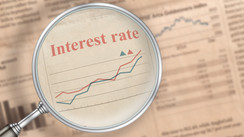Changing Dynamics in Global Finance
The widespread correlation between the United States and Eurozone interest rates can be expected to dissolve in the foreseeable future. This situation has been a long time in the making, and it revolves around the altered expectations for these world's two most influential markets. The European Central Bank (ECB) has recently revised its economic growth and inflation rates downwards. These changes hint at the commencement of the ECB's rate-cutting stage, despite ECB's President Christine Lagarde's contradiction.
The Contrasting Economic Realities of the U.S. and the Eurozone
The American economy reflects a completely different picture. It currently presents signs of accelerating price pressures with the economy running at an impressive speed. It leads to growing conjectures that the Federal Reserve might consider increasing its 'neutral' interest rate forecast later this month. Although officials from both these central banks have resisted aligning with these predicted narratives for their respective economies, the reality may be unavoidable. The Federal Reserve wants to avoid an economic downfall while the ECB is keen on maintaining its credibility for combating inflation.
The Impact on Financial Markets
Despite the intention to provide maximum adaptability, the policy makers from both the Federal Reserve and the ECB have ended up singing the same tune. This has resulted in a similar predicted path for the interest rates in the U.S. and the Eurozone up to 2025. As a result, there has been an almost traditional agreement between small-duration U.S. and Eurozone government bonds, which has affected the Euro/USD exchange rates, dampening fluctuations in foreign exchange and bond markets. Can this synchronization continue?
The Impending Reality Check
Dario Perkins, the global macro strategist at TS Lombard, predicts a reality check to take place soon; ‘the ECB policymakers have resisted the notion of rate cuts. However, this resistance will probably last only for a few more months,’ he expressed his views recently. Following this imminent reality check, the ECB's expectations for inflation to slow down to 1.9% by next summer and stabilize through the end of 2026 might be challenged. Comparatively, the Federal Reserve may revise its 2021 growth projection of 1.4% upwards, while the ECB has reduced its 2024 GDP growth prediction to a mere 0.6%.
The Increasing Gap Between U.S. and Eurozone Prospects
Given the re-escalation of growth and price pressure in the U.S., Torsten Slok from Apollo Global Management does not anticipate the Federal Reserve to decrease rates this year. While emphasizing the Fed's likely focus on managing inflation for most of 2024, he opines that the present rates will prevail for a longer period. Despite these economic disparities and expectations, the markets haven’t reflected this divergence yet. Current market pricing predict both central banks to make their first rate cut around mid-2024. But, as the shifts in economic growth prospects become more evident, the markets will have to adjust to this changed reality.





